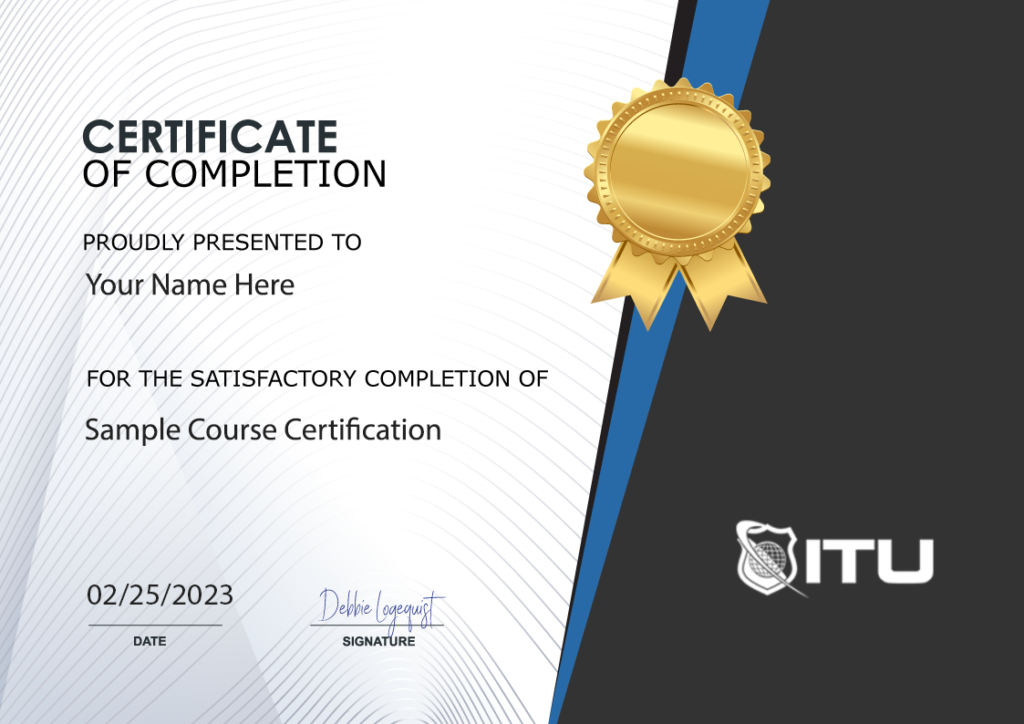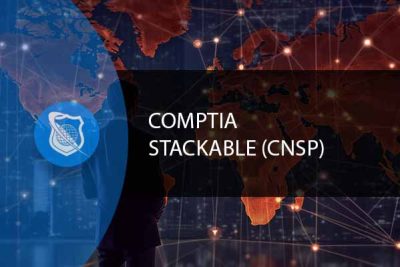
Lifetime
An ITU Online Training exclusive. The only Buy Once, Never Pay for IT training again program available. Plus, get all new and updated content for life.

With an All-Access Pass, you get access to every current and future ITU course. Access over 2,500 hours of on-demand IT Training 24/7. With over 13,000 on-demand training videos and 19,000+ practice questions, you'll have the tools to excel in the critical IT skills needed to elevate your IT Career. Our All-Access pass is available in three affordable plans.
Paris is the capital of France.
Tokyo is the capital of Japan.
Most Popular
Categories


With an All-Access Pass, you get access to every current and future ITU course. Access over 2,500 hours of on-demand IT Training 24/7. With over 13,000 on-demand training videos and 19,000+ practice questions, you'll have the tools to excel in the critical IT skills needed to elevate your IT Career. Our All-Access pass is available in three affordable plans.

ITU provides a vast array of IT-focused on-demand training designed to help you excel in both entry-level and advanced IT skills. Browse our most popular training or take a deper dive into our robust catalog of training categories.
Popular Courses All Categories





Are you an early-career IT professionals or mid – level IT looking to advance your career and gain greater recognition? The CompTIA CNSP certification is the perfect choice for you! Designed specifically with 2-5 years of experience in mind, the Certification Path includes all learning materials that will help prepare you to pass each exam: Security+, PenTest+ & Cybersecurity Analyst (CySA+) – allowing you to reach cybersecurity mastery.
Included In This Course
Closed Captions
Certificate of Completion
Course Description
Are you an IT professional with 2 to 5 years of experience looking for a stackable certification by CompTIA? Consider the CompTIA CNSP! The ITU Certification Path provides all the necessary materials and guidelines for studying and passing the required certification exam, such as Security+, PenTest+ and CySA+. With this stackable certification path, your technical skills in these areas will be tested – helping you gain confidence in yourself that’s backed up by security certification.
The ITU Certification Path is designed for self-paced learning. Work at your own pace and join our community of IT professionals who have already begun their journey to advance their career in cybersecurity! With access to our online course training, you can master the material quickly and easily with videos, lectures, and practice questions that cover the exact information you need. Our ITU Certification Path helps you to prepare for success as a cybersecurity professionals and take control of your future.
Don’t miss out on this incredible opportunity to get an unbeatable deal on this training series – now at a discounted price! View our Master CompTIA Training Series which includes this course.
Passing the three exams required for this path will grant you not one, but three CompTIA certifications and ultimately render you a Certified Network Security Professional, CompTIA CNSP.
This CompTIA CNSP pathway consists of three courses:
Upon successfully passing the applicable exams provided by CompTIA, you will earn the CNSP certification badge.
To discover more about CompTIA’s Stackable Certifications, visit the CompTIA website. With this revolutionary certification program, you can take your career and credentials to the next level. Explore what options are available for enhancing your knowledge base and expanding into new fields of expertise.Pricing charged by CompTIA varies by exam. For details on current pricing, visit CompTIA Pricing on their website.
The CompTIA CNSP (Network Security Professional) certification is a course designed for early-career IT professionals or mid-level IT individuals looking to advance their career and gain greater recognition. Specifically, it is intended for those with 2-5 years of experience. This certification includes all learning materials that will help prepare you to pass each exam: Security+, PenTest+, and Cybersecurity Analyst (CySA+).
The ITU Certification Path is designed for self-paced learning, which means you can work at your own pace. The course includes 64 training hours, 266 videos, 44 topics, and 495 practice questions.
The CompTIA Security+ certification is a global certification that validates the baseline skills necessary to perform core security functions. It covers skills such as assessing the security of an organization, monitoring and securing hybrid environments, operating with awareness of applicable laws and policies, and responding to security events and incidents. It is compliant with ISO 17024 standards and is approved by the U.S. DoD.
The CompTIA PenTest+ certification is for cybersecurity professionals tasked with penetration testing and vulnerability management. It covers skills such as planning and scoping, information gathering and vulnerability scanning, attacks and exploits, reporting and communication, and tools and code analysis. It emphasizes the most relevant pen testing skills for the cloud, hybrid environments, web applications, and the Internet of Things (IoT).
Jobs that you can potentially land with these certifications include business analyst, cybersecurity manager, software developer, systems administrator, security consultant, cloud penetration tester, web app penetration tester, cloud security specialist, network security specialist, network security operations, threat intelligence analyst, and vulnerability analyst.

Course Outline
Chrys Thorsen is an education and technology expert who specializes in enterprise-level IT infrastructure consulting and certified training-of-trainers. In her career, she has garnered over 50 IT Certifications including CISSP, CISA, CEHv12, PenTest+, CompTIA CNVP, Cisco CCSI/CCNP, Microsoft Cloud and on-premises technologies, VMware vSphere, and many more. She has also authored 40 published certification textbooks, and over 35 full-length IT certification video courses.
When not working in the United States, Chrys spends her time abroad capacity-building IT literacy in developing nations in Sub-Saharan Africa. Her client list has included: the US Federal Government, the Republic of Zambia Ministry of Health, Cavendish University Zambia, Accenture, JP Morgan Chase, the US Centers for Disease Control and Prevention, the Elizabeth Glaser Pediatric AIDS Foundation (EGPAF), Hughes Aircraft, Microsoft, and many more.
Chrys lives by, and is fond of repeating, her professional creed:
“The only true measure of success for any project or training is results on the ground. Everything else is just noise.” “I teach what I deploy; I deploy what I teach.”
John is a Senior Technical Instructor at Ft. Gordon in Augusta, Georgia, instructing U.S. military and civilian employees on a number of cybersecurity subjects and certifications. He has been an IT professional for well over two decades, as prior to his current job he retired from the Army after a 20-year career as a soldier in the signal branch (IT and communications). John holds a bachelor’s degree in Computer Science from the University of Maryland Global Campus as well as the following IT certifications: Network+, Security+, Cybersecurity Analyst (CySA+), CompTIA Advanced Security Practitioner (CASP+), Certified Information Systems Security Professional (CISSP).
Professor Brian O'Hare has over 25 years of experience in the IT industry. He started off in web design as a Corporate Webmaster but wanted to understand how the internet worked. While working towards his bachelor’s in computer science, he studied and got his MCSE (Microsoft Certified Systems Engineer) and his MCT (Microsoft Certified Trainer). Once certified he paid for his degree working as a Network Engineer and then a Trainer for others wanting to learn about Microsoft’s Desktop and Server products.
Start this course for free with our 10-day trial of the all-access subscription providing access to over 2,600 hours of training.
$59.00

Monthly All-Access Subscription
7 Days Free - $39.00 / month
A great option at an affordable monthly price.
Annual All-Access Subscription
$229 / year
A discounted price when paying for your All Access library on an annual basis.
Lifetime All-Access Library
$379 One time payment
Exceptional Value. Pay once, never have to buy IT training again.
$49.00
$69.00
Microsoft Azure is a cloud computing platform and infrastructure created by Microsoft for building, deploying, and managing applications and services through a global network of Microsoft-managed data centers. It provides a range of cloud services, including computing, storage, networking, analytics, machine learning, and internet of things (IoT), as well as many other services.
$79.00 $47.40
This SQL Server training series has it all. For years, Microsoft has been the go-to brand for database technology and it remains a top preference among many corporations and individual users alike. This comprehensive training series covers versions 2012 through 2019 of Microsoft SQL Server that are still extensively utilized at present. You will be given an in-depth look into SQL Server administration, database design, analysis services, reporting services, PowerBI and more during this learning program.

Unlock endless learning opportunities with over 2,500 hours of IT training at our lowest price ever. Plus, get all new and updated online courses for free while your subscription remains active.
Cancel at your convenience. This exceptional deal on IT training provides you access to high-quality IT education at the lowest monthly subscription rate in the market. Boost your IT skills and join our journey towards a smarter tomorrow.
Mary Beth helped me. She was wonderful.